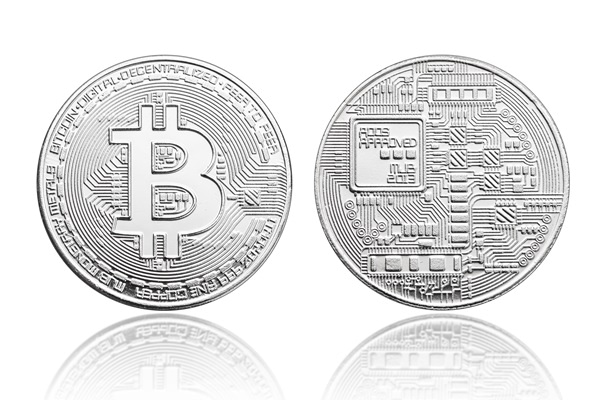Bussiness
Bitcoin vs Silver: The journey to flipping the market – London Business News | Londonlovesbusiness.com

As of 2024, Bitcoin (BTC)continues to capture headlines and imaginations across the globe, embodying the cutting edge of financial technology and digital assets.
Overview
Experts at Bitcoin Synergy Official noted that the world’s second most valuable metal saw a 33.4% surge, whereas BTC hit an all-time high of $73,737 on March 14, 2024, before pulling back by 9.5%. As a result, silver’s capitalisation of $1.83 trillion now exceeds BTC by $500 billion, as BTC’s market cap stands at $1.31 trillion, according to Companies Market Cap. For BTC to surpass silver’s current market cap, it must increase by 40% to reach $93,000, assuming other factors remain constant. Meanwhile, silver, a stalwart of tangible value, has held its place in the global economy for millennia. The idea of Bitcoin surpassing silver in market value—termed “flipping” silver—is captivating for investors and financial analysts alike. To achieve this, Bitcoin would need to reach approximately $93,000 per coin, a milestone that speaks volumes about the evolving landscape of global assets.
Understanding the market capitalisation
Market capitalisation, or market cap, is a crucial metric in comparing the value of different assets. It is calculated by multiplying the current price of an asset by its total supply. The total market capitalisation of silver is estimated at around $1.3 trillion. This valuation includes silver in jewellery, industry, and investment forms like bars and coins. BTC’s market cap fluctuates with its price, but as of May 2024, with BTC’s price around $27,000, its market cap is roughly $520 billion, given its circulating supply of approximately 19.3 million coins. BTC would need a significant price increase to surpass silver’s market cap. Calculating this involves dividing silver’s market cap by BTC’s circulating supply. Thus, $1.3 trillion divided by 19.3 million coins gives us a target price of approximately $67,360. However, considering market dynamics and potential future adjustments in circulating supply, a more conservative and realistic estimate places the flipping point around $93,000 per BTC.
Factors driving Bitcoin’s growth
Current reports suggest that BTC is the world’s ninth-largest asset, trailing gold, Microsoft, Apple, Nvidia, Google, Saudi Aramco, Amazon and silver. BTC analyst Dylan LeClair had observed that BTC often doubles within months after hitting new highs, especially around halving events. The current market cap of BTC is much larger than it was in 2020, 2016, and 2012, making such rapid gains more challenging to achieve. Several factors could propel BTC to the $93,000 mark:
- Institutional investment: Increasing institutional investment in Bitcoin has been a key driver of its price. Companies like Tesla, MicroStrategy, and numerous hedge funds have already made significant investments. Continued interest and allocation from institutional investors could drive demand and push prices higher.
- Adoption and utility: BTC’s utility as a medium of exchange and store of value continues to grow. With developments in the Lightning Network enhancing transaction speeds and reducing costs, Bitcoin’s usability in everyday transactions is improving. Moreover, countries like El Salvador have adopted BTC as a legal tender, setting a precedent for broader acceptance.
- Macro-economic factors: Global economic instability, inflation fears, and distrust in traditional financial systems can drive more individuals and institutions towards BTC as a hedge. BTC’s decentralised nature makes it an attractive option for preserving wealth in uncertain times.
- Scarcity and halving cycles: BTC’s inherent shortage, with a capped supply of 21 million coins, and its halving events, which reduce the rate of new supply, create a supply-side pressure that can lead to price increases. The next halving event, expected in 2024, could further constrain supply and boost prices.
Silver’s position and prospects
Silver, often termed “the poor man’s gold,” holds significant industrial value. It is essential in electronics, solar panels, and medical devices. While it also acts as a store of value, its price is influenced heavily by industrial demand and macroeconomic factors. Silver’s dual role as an industrial metal and an investment asset gives it a unique position in the market.
However, silver faces challenges in its quest to retain market dominance:
- Industrial dependency: Silver’s price is tied closely to industrial demand, which can fluctuate with global economic conditions. A slowdown in industrial activity can negatively impact its price.
- Investment dynamics: Although silver is a traditional investment asset, it has not seen the same explosive growth or mainstream attention as Bitcoin. Younger generations, more inclined towards digital assets, might favour Bitcoin over silver.
- Market liquidity: The silver market is generally more liquid than Bitcoin’s, with a long-established infrastructure for trading and investment. However, as digital asset platforms become more sophisticated, Bitcoin’s liquidity is improving rapidly.
The path forward
The journey of BTC potentially flipping silver in market cap is a testament to the dynamic nature of global financial markets. While silver’s value is deeply rooted in historical and industrial contexts, BTC represents the frontier of economic innovation and digital transformation. Reaching $93,000 per BTC would require a confluence of factors aligning to favour the crypto, including continued adoption, investment, and macroeconomic conditions favouring digital assets.
For investors and observers, this potential milestone is more than a numerical target; it symbolises a shift in how value is perceived and stored in the modern era. Whether or not Bitcoin reaches this price point, the comparison highlights the evolving narrative of financial markets, where digital assets increasingly challenge traditional norms and redefine what constitutes wealth in the 21st century.
The above information does not constitute any form of advice or recommendation by London Loves Business and is not intended to be relied upon by users in making (or refraining from making) any finance decisions. Appropriate independent advice should be obtained before making any such decision. London Loves Business bears no responsibility for any gains or losses.










